The participatory theater project Climate Parliament gathered ambassadors in summer 2020 who spoke for creatures and inanimate things. They discussed in three assemblies how to improve their conditions of existence in the face of climate change and passed resolutions that were presented to Hamburgs 2nd Mayor Katharina Fegebank in December 2020. By empathizing with other creatures such as swifts, earthworms or inanimate things like a car, compromises were negotiated over a wide variety of needs.
What if our environment could speak for itself, that is, if non-human beings were given a voice to help determine the policies of our planet? What would we argue and debate about?
Climate change and other ecological crises can only be stopped and reversed if we make a profound cultural change, away from consumption and towards a culture that leaves room for other living beings. Our artistic concept is based on the approach of the French philosopher and sociologist Bruno Latour that we humans must learn to interact more skillfully with non-human actors to adequately maneuver the coming ecological crises. In addition, we follow the results of the Norwegian CLIMART project, which was able to show that people's willingness to act in a climate-friendly way increases when they develop empathy with those affected through their own experience.
The process is open to all people of all ages and background. By adopting the viewpoints and perspectives of other beings or entities participants experience empathy for these living beings or natural identities, e.g. the ice:
"For a few years now, I've been getting smaller and smaller, less and less, which scares me.I crystallize into a hexagonal crystal system, so in parts I already exist as a snowflake or a hailstone, or when waters freeze. I have heard that I appear most impressively as a glacier. - The Ice"
In the climate parliament sessions, demands of the various beings and unbeings are negotiated with each other in a grassroots democratic manner, with the goal of forging a "grand coalition for the Earth (and all humans and other living beings on it)." The participants experience that democratic processes may take many detours, but they can also be fun and increase the sense of self-worth. The demands and resolutions of these citizen council-like assemblies are handed over – on a symbolic level, but certainly with the intention that they be implemented – to "official", purely human politics.
Please highlight how the project can be exemplary in this context
Concrete sustainability related design issues are raised through the concern of various entities that are reported in the Climate Parliaments process. For example that could be the suffering from plastic waste or the heat or lack of oxygen in river water, or that habitats are being lost because of the way we design our buildings. This is illustrated by a quote from the Swifts' appeal:
"Please imagine this: You come back from your winter quarters in Africa for, say, the 12th, 13th, 14th time to your beloved, long-established nesting place, and then there's nothing there!!! Nothing at all. Torn off. Smudged. Dead renovated. And suddenly, from one moment to the next, your entire colony is homeless. And then? What to do? Where to move?? - The swift".
Through the descriptions of how other beings are directly affected, it becomes clear to participants and viewers that we live in a completely networked world and that a change in our modes of production and consumption and the design of our human creations is needed to preserve livable spaces and living environments for all beings. The encounter of the positions of different actors makes it clear that individual beings in their unrestrained development would be harmful to other beings. Together, processes of negotiation are tried out in the theater and compromises are found. As the restriction of one is outweighed by the better survival of the other being, a space is created in which renunciation of certain behaviors is a gain for the community. Such basic willingness and considerations are an important cultural prerequisite for redirecting on a material level.
The focus on ecological contexts - where no waste exists and everything left by one species is used somehow by some other species - makes the establishment of a circular economy immediately plausible. Acquisition and consumption of ever new consumer goods becomes less relevant compared to the positive feedback from the community of entities.
Please highlight how the project can be exemplary in this context
We strive for a comprehensive aesthetic and content design of the theater evenings and the whole process leading to it. A musician has created music for the project and acoustic translations of non-human voices, we have developed our own "bureaucracy" with a stamp, forms for the empathic work and guidelines. This serves to give orientation to the participants in the unfamiliar situation.
By adopting the viewpoints and perspectives of other living beings - or even inanimate natural objects - participants experience empathy for these living beings or natural identities. Wilderness pedagogical empathy exercises, writing an appeal, finding a suitable sound as well as a way of speaking and making a costume help to anchor this process rationally and emotionally: Making a costume with one's own hands adds a haptic level of experience and action, in which everyday objects, natural materials, or the like are processed and assembled into one's own aesthetic creation. The musical level, finding a sound that matches the creature/thing, and developing an appropriate way of speaking invite participants to really internalize the experiential world and conditions of existence of other species or things. This and the habit of wearing a costume or accessories help to really "slip into the skin" of an alien being when performing and to speak from that perspective.
In the negotiations, those in the safe space of the theater experience controversial discussions, forming coalitions to advocate for the interests of the (un)beings they represent. They take the experiences from this intense change of perspective and trial action from the project into their everyday lives.
The stage space is populated with strange beings that stand for global challenges. Many elements of the stage were made from found objects and recycled materials - the aestheticization of these objects and materials contributes to a change in the audience's expectation of what is beautiful and desirable.
Please highlight how the project can be exemplary in this context
As a socio-cultural project, the Climate Parliament is open to all people, and functions only through the participants' own contributions, which are an integral part of the process.
There were participants from all ages, genders, mixed-abled, diverse, immigrants and Hamburgers; retired as well as working, pupils and students. The diverse mix enabled a meeting of different people who were able to give each other many impulses and without whom the project would not have been possible. (In a first continuation of the project we worked with a group of students and adapted the process and materials to this context).
Crucial for us was the concrete personal approach to specific interest groups and grassroots movements relevant to our topic, but also going out on the street (in front of the project room, flyer distribution at various markets, participation in the climate strike, visiting the climate camp of Fridays for Future Hamburg) to initiate chance encounters, as well as spreading the word in the personal environment with a request for further distribution. We recorded a teaser video on how to become an ambassador and put up posters in various parts of the city ourselves, as well as spreading the word via advertising columns for cultural events. We worked out a newsletter an a social media campaign with our performance venue Kampnagel: Three ambassadors from different professional, age and milieu groups were specifically featured via social media as examples, advertising how anyone can become an ambassador.
With the process of the Climate Parliament, which opens up inclusion even beyond the boundaries of the species "Homo sapiens," an exchange takes place among the participants as well as the viewers, empathy for fellow beings and unbeings and awareness of one's own responsibility grow.
Please highlight how this approach can be exemplary
Sustainability, aesthetics and quality of experience are as firmly anchored in the concept of the Climate Parliament as the aspect of community and inclusion. We have sought as many different speakers as possible in order to let as many voices of different beings sound out as possible and thus enable a change of perspective, even beyond the framework of the species "human". As an example, a quote from the appeal of the earthworm:
"There is no eternal existence, there is only transformation of matter. I, worm, am in the earth, the earth is in me. We are in you and you are in us. You are nothing but temporarily transformed soil! - The earthworm."
Costumes were built by the ambassadors themselves, sounds representing the essence were developed to allow the positions of the represented entities to be experienced comprehensively in the common space of the negotiations. The inclusion of different art forms and the experience of representing an entity was found to be very enriching by the participants.
Sustainability is one of the central themes throughout the process. In terms of content, the discussions about the needs of the different beings lead to the insight that compromises have to be found, which in some cases also require renouncing certain things or behaviors, or inspire the development of new techniques.
In the process itself, we also tried to act as sustainably as possible, for example in the consistent use of recycled materials and by using bicycles or public transportation. This broadening of perception and discussion helps to increase the readiness for profound cultural change and can also be transferred to other areas.
Our innovative artistic approach is based on creativity, motivation, empathy. When the needs of different entities are aligned, one's own perspectives and positions thought to be unchangeable can be redefined. In the appeals, the ambassadors have each presented and honored locally significant entities, from Hamburg's urban greenways, the dying smelt in the Elbe River around which rich traditions entwine, to the nearby Brokdorf nuclear power plant and public transportation, and the Elbe River itself. By presenting their views, these advocates have made it clear that the city of Hamburg is a communal place of the people who shape and make it up, and that this community should be expanded. This is particularly well illustrated by the following quotation from the appeal of the Ambassador of the City Pigeons:
"A city has never been a purely human gathering, but a process in a place that arises from the connections of all beings and unbeings. - The City Pigeons"
Through the research, unexpected facts became clear to us, e.g. that bats are millions of years older than the river Elbe. Participants and spectators could also learn how special fireflies actually are:
"The so-called luciferin, a natural substance for generating light, triggers a chemical reaction together with an enzyme, a kind of energy building block, and oxygen. We are, in effect, super light bulbs and hold the record for the best efficiency. - The glow worm"
Environmental education in their own research and engagement with the appeals of the other ambassadors resulted in participants and audience members changing their perceptions and opinions about other beings. For example, after the meetings, the public transportation representative expressed more understanding of urban pigeons than before. And the ambassador of the mosses mounted a moss grafitti on the wall of her apartment building.
Please also explain the benefits that derived from their involvement.
From the very beginning, the project was designed to enable individuals, but also initiatives, to network and discover fields of action or common interests together. There were points of contact and networking with Fridays for Future, Extinction Rebellion, other activists, the Future Council Hamburg, the initiative "Mehr Demokratie e.V.," a lecturer at the University of Applied Sciences, schools, churches, artists, Kampnagel spectators, people on the street and in private conversations.
The Climate Parliament could only function as a participatory theater project at all with the participation of many people. They empathized, researched, wrote texts for their appeals, showed up for rehearsals, produced videos themselves for the first time and dealt with them new digital techniques.
The project was planned as a live discussion in front of an audience, unfortunately due to Covid 19 restrictions we had to let the ambassadors discuss with each other via Zoom from their respective homes. The planned audience participation was also realized on screen via a moderated YouTube live chat. Despite the uncertain and difficult situation caused by the Corona restrictions, we held successful events due to the dedication and flexibility and willingness to experiment of all participants. In some cases, the use of digital media has even resulted in exciting extensions of the original concept.
We have taken UN Secretary General Guterres' speech literally: "Don`t come with a speech, come with a plan!". Merely reporting on the climate crisis is no longer enough. Rather, we must recognize that we are facing powers and modes of existence that react to our actions - and act themselves. It is therefore necessary to enter into negotiations with them for a kind of basic rights catalog or a nature treaty that enables all beings on earth to live together in solidarity.
The biggest challenge we are addressing with the Climate Parliament is the disproportion of the scale and threat of the global crises in relation to what we have done so far to deal with them. Climate change, biodiversity loss, and other planetary boundaries are issues, as are resource scarcity, circular economy, and water and environmental pollution. Following the findings of the Norwegian CLIMART project that the willingness to act increases through personal experience, we have created a space where people can define problems and work out solutions together in a playful way.
Interconnected, systemic thinking that can balance many different demands is needed to meet these challenges. In the theater project rehearsal, participants learn to broaden their view and include a wide variety of positions. After intensive discussions between the ambassadors and in the context of audience participation, resolutions and proposals were voted on and handed over to Hamburg's politicians at the end of the project.
Despite the knowledge, the implementation so far is not enough to reduce emissions and take other important measures. For this, it seems that more pressure needs to be built up from civil society, and we want to contribute to this.
French sociologist and philosopher Bruno Latour has envisioned a framework for this in several writings (The Parliament of Things, Ways of Existence, Struggle for Gaia, The Terrestrial Manifesto). But so far, few have attempted to put it into practice. Corona has shown us how much we are all connected and part of nature. And what it would take: a grand coalition of as many earthlings as possible.
But how to get into action for something that is itself such an incomprehensibly gigantic actor? Climate, as we know, has a problem of representation: it is composed "of forces of unimaginable violence, representing intolerably close connections across immeasurable interstices in time and space." Armed with Latour's ideas, we undertake the paradoxical attempt of a representational attack on the problem of representation: by gathering as many inhabitants of the earth (and their advocates) as possible, starting from the Hamburg area as an example, who exert influence on the climate as actors and "multiplicities" here, in order to make them speak for themselves in a large assembly at the end.
Our socio-cultural theater project is a cultural event that is clearly more than a consumer product. People often go to the theater to relax, to watch actors acting out feelings and experiences on stage. In the Climate Parliament, things are different. Emotions that affect us all can find a space here, be shown and absorbed in the community and, in the performances, touch the audience and inspire them to think and share.
Please provide clear documentation, communication of methodology and principles in this context.
The Climate Parliament creates space for solution oriented discussion about the climate crisis. Everyone can make a valuable contribution to the process. The process consists of two phases: The first phase is the acquisition of ambassadors, which unfolds as the development of a social sculpture: An exhibition space is used as a climate office ("Permanent Representation of all Beings and Unbeings", there were dedicated opening hours), from which we fan out to find ambassadors. Means for this are canvassing previously researched and arranged contacts, press release, advertisements, posters, ads, social media posts and peddling at random. Anyone can participate, not only experts are called upon.The "Permanent Representation" is thereby at the same time a social place of encounter, in which (among other things in specific workshop formats) the empathy for other beings and unbeings and their representation of interests can be concretely tested and practiced by writing a speech for the Assembly.
In the second phase, assemblies are held, each with 10-12 ambassadors associated with a specific issue or habitat, meeting with interested audiences before whom they make their appeals and with whom discussions and resolutions are passed. These are then presented to the "official" politicians in a public act afterwards. To each of the three assemblies an external impulse giver from local NGOs/grassroots movements is invited, who give suggestions for discussion-relevant topics in a small impulse lecture.
Our approach can be easily transferred to other local contexts and it can be carried out with new groups. The materials we created for the project help guiding the process, they could be used by other people that are trained by us. There are prepared instructions for empathizing with other beings, wilderness pedagogical exercises for doing so, a detailed questionnaire for signing up as an ambassador, and a guide for writing the appeals.
Achievements
For the three founding meetings we were able to attract between 400 and 600 internet viewers each time, there were 420 views registered on YouTube on Friday, 610 on Saturday, and around 400 again on Sunday, the larger share of these views occurred during the livestreams (since we were not allowed to leave the performance recording from Sunday with the sign language interpreters on the web for privacy reasons, the newly posted version without the interpreters has a lower number of hits). Two writing workshops were held during the rehearsal period, with exercises in creative writing and sharing among participants about their appeals.
After the main project, from February 2021 to May 2021, two of our team members facilitated an offshoot of Climate Parliament in a 5th grade classroom. This involved 28 students and one classroom teacher. The result was presented digitally at the FLEX theater festival. Additionally, we organized an ambassador meeting in 2022 the Luthergarten in Bahrenfeld, where for the the ambassadors could meet in person and further exchange and network.
Funding theater projects beyond a one-time event is difficult to implement; the prize money and recognition from the New European Bauhaus Prize would help a lot to continue the project successfully and to have a financial starting point for further climate parliaments - if possible also in other countries.
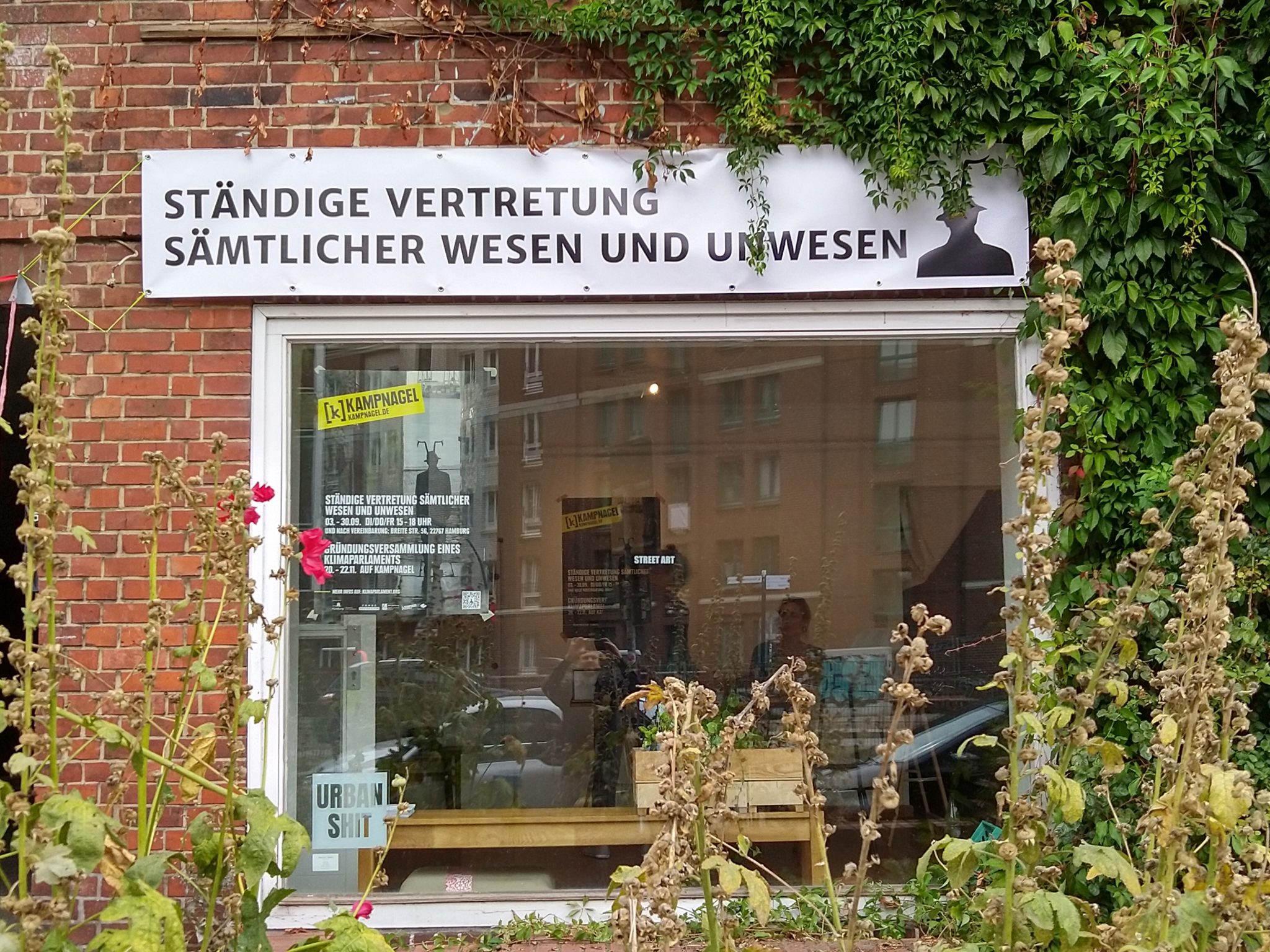
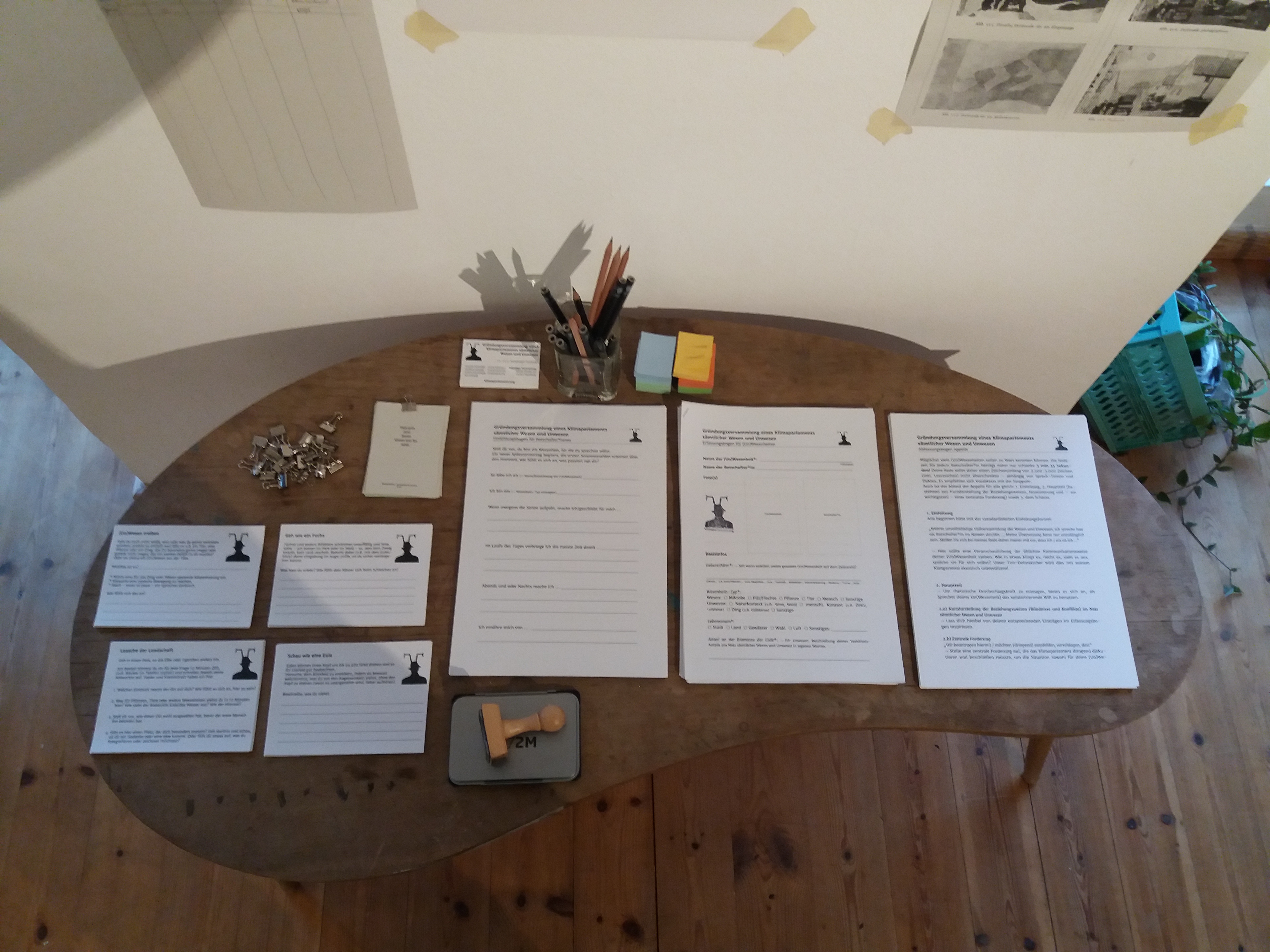
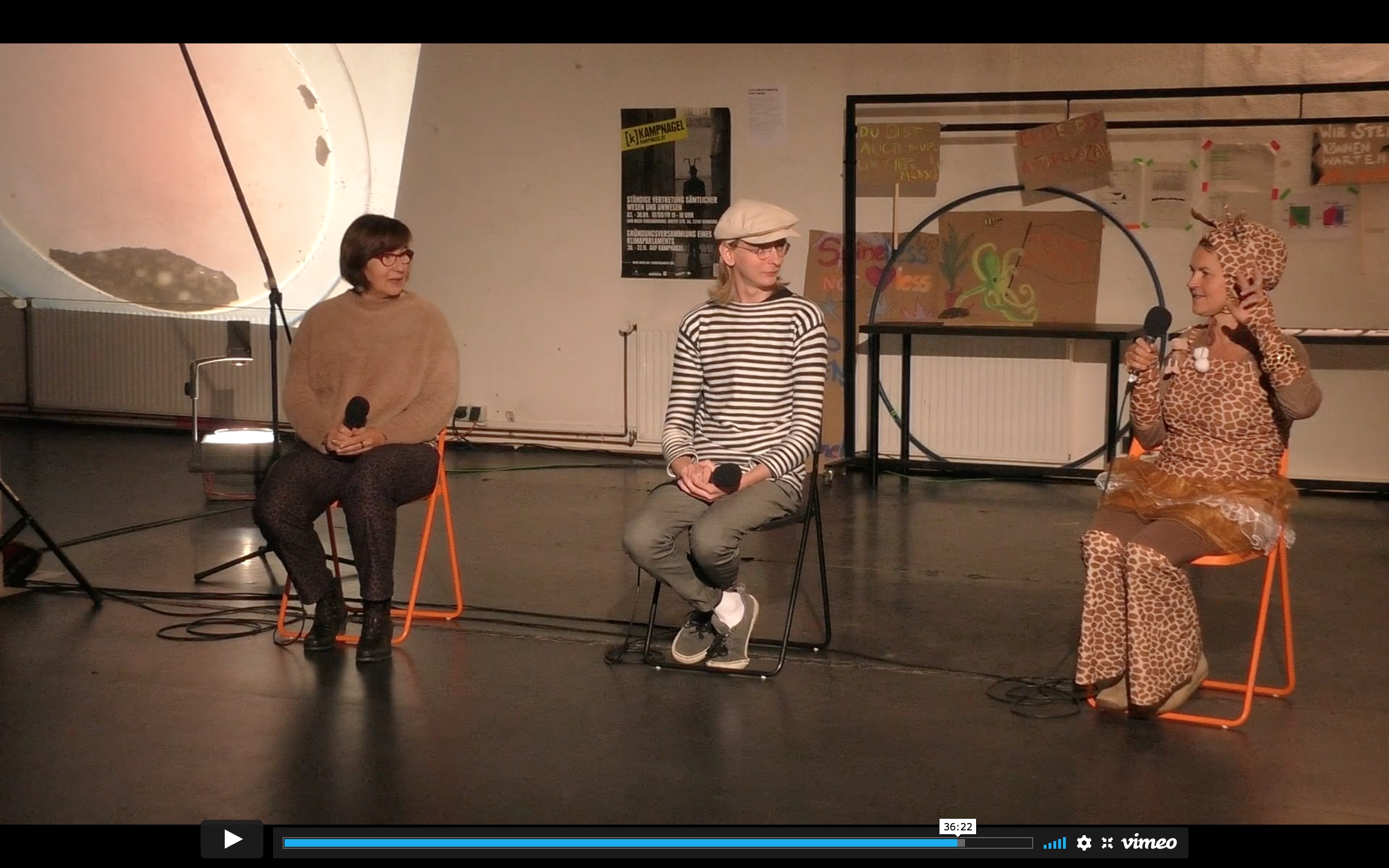
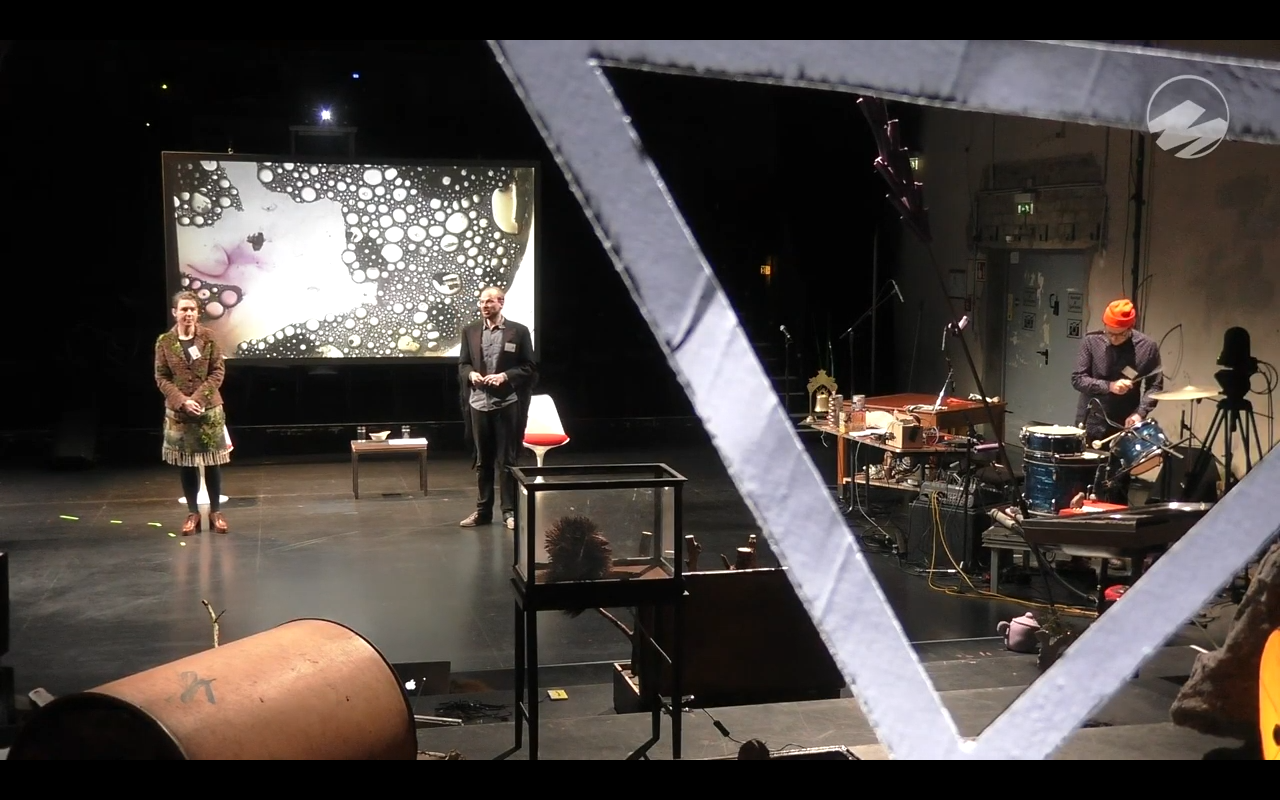
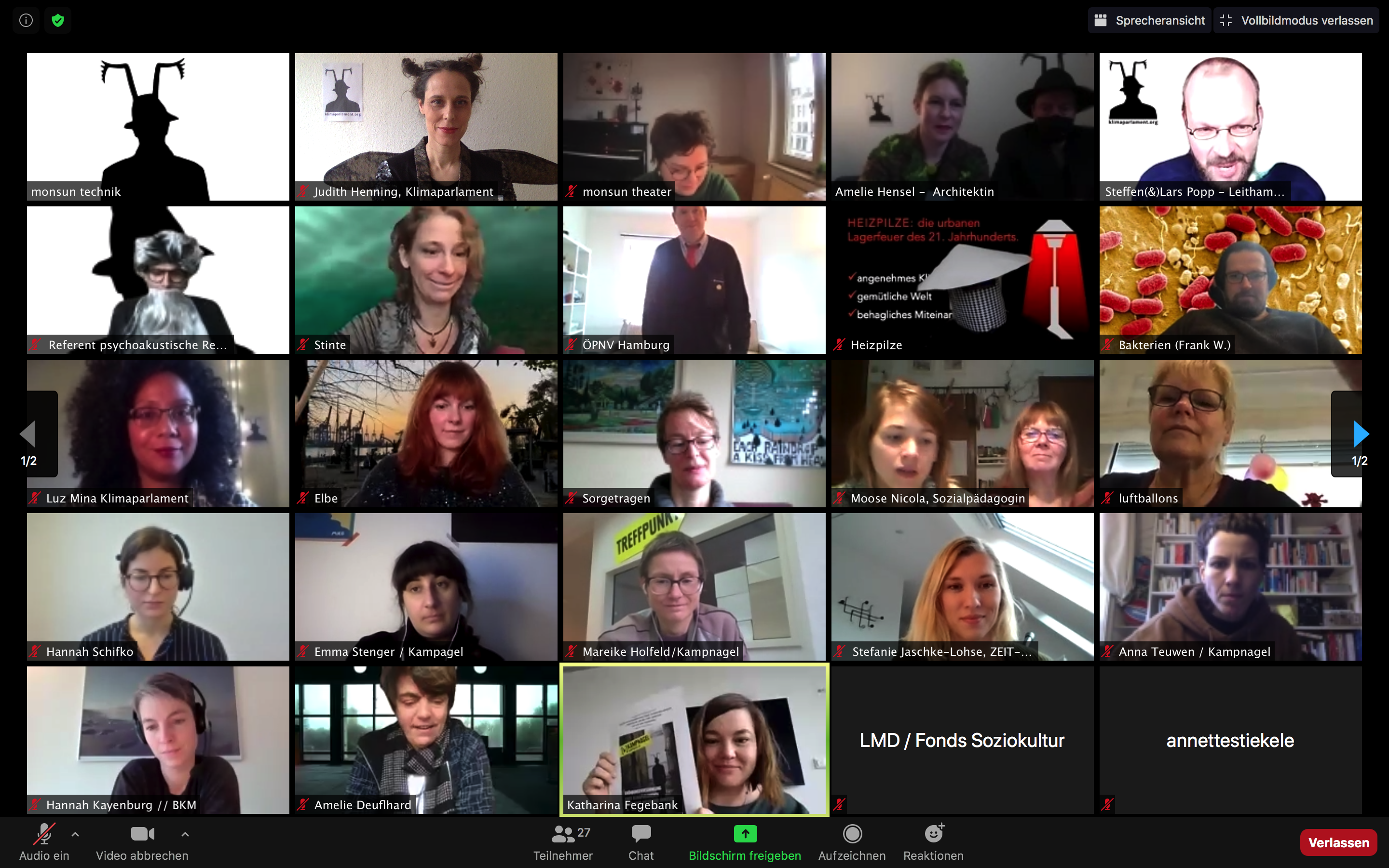
@Judith Henning, 2020
Content licensed to the European Union.